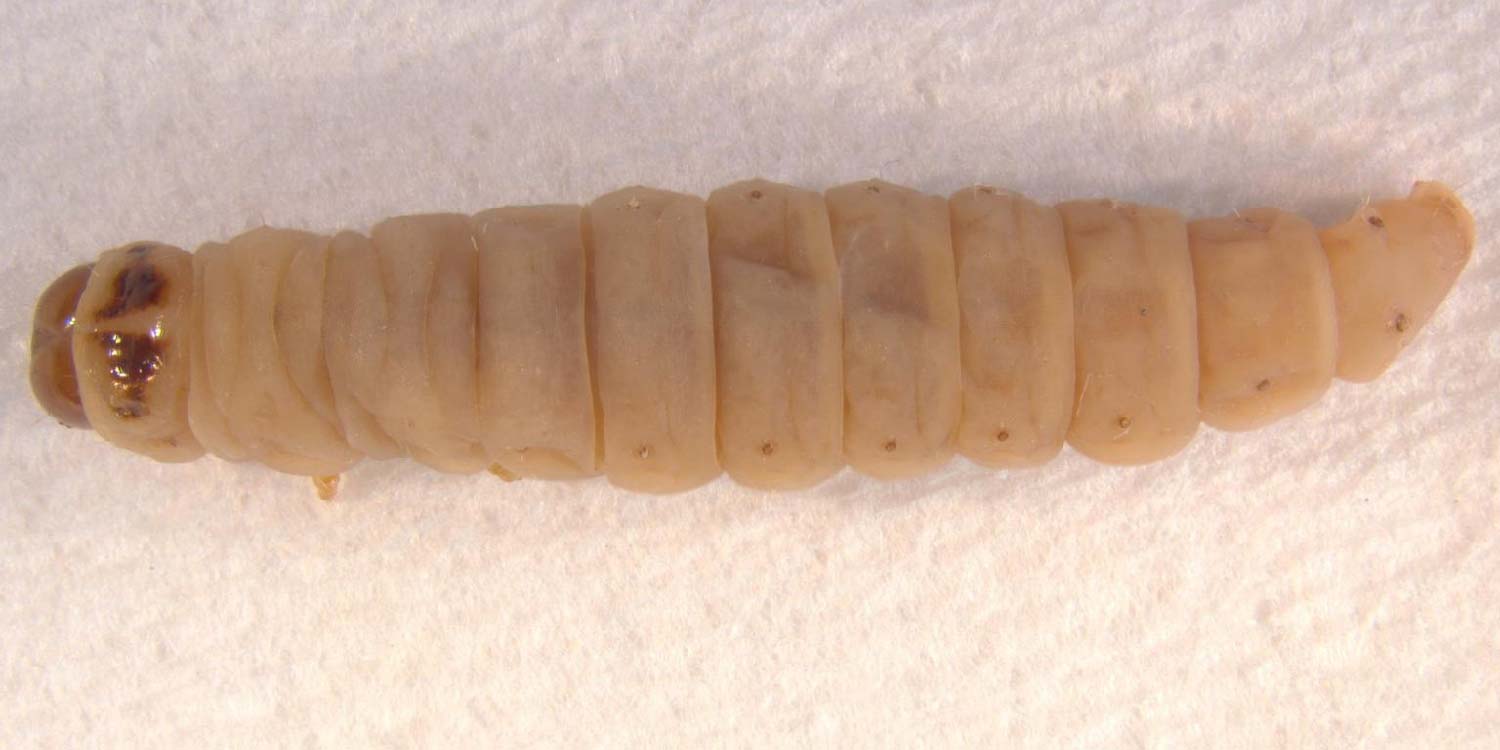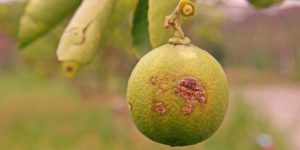The red banded mango caterpillar is a pest of mango in tropical parts where it causes significant commercial losses and is considered a serious threat to commercial mango production.
The caterpillar tunnels through the skin and flesh and feeds on the seed, causing fruit spoiling and premature fruit drop.
Fruits attacked by red banded mango caterpillars are of low quality and unattractive to the customer.
Fruit are attacked in various stages of development.
LIFE CYCLE
Eggs are laid on the fruit stalk and after 7-8 days they hatch into larvae, which tunnel into the flesh to feed on the pulp and then into the seed.
Larvae feed for 15-20 days and pupate in the soil for around 20 days, before emerging as the adult moth to continue egg-laying.
DESCRIPTION
Eggs
They are laid singly or in twos, their irregular shapes conform to the crevices they are laid in and are milky white when laid then turn crimson after 2-3 days.
Larvae
They are generally plump, glossy, brightly banded in white and dark red and have a black collar near the head.
The first instar is cream with black head and 11 pink bands dorsally while instars 2 and 3 larger with the coloured bands darkening to a bright red.
Pupae
They are found in the ground in woven silk cocoon or in the bark on tree trunks.
Adults
They are approximately 12mm long with white scales on vertex, a whitish line on lateral margins of pronotum and a transverse white band dorsally on 3rd abdominal segment. The forewings are white mixed with dark scales, giving a pale brown appearance. A brown band of varying thickness is present along the termen, apex and tornus and a faint incomplete dark brown median line. Forewings are white mixed with dark scales, giving a pale brown appearance overall, while hindwings are white with a narrow dark brown band along the apical half of the wing, broad light brown longitudinal band across middle to wings.
The females are usually larger than males and have tapering abdomens while males’ are rounded.
SIGNS & SYMPTOMS OF INFESTATION
The main damage is caused by larvae which after hatching tunnel into the flesh. As the larvae mature, they further burrow into the kernel and stay in the seed.
The presence of a liquid exudate from the mouth of a tunnel chewed by the caterpillar through the skin is a usual sign. This liquid trickles down to the tip of the fruit and accumulates. Although almost clear when fresh, the liquid darkens and shows up as a dark streak on the skin leading to a dark spot at the fruit tip.
Early signs of infestation include small darkened boreholes on the fruit caused by entering larvae. These holes are usually filled with frass which lead to rotting and also provide entry point for pathogens which cause secondary infections.
For instance, a damaged fruit may be attacked secondarily by fruit flies or various decaying organisms and may fall off the tree prematurely.
When an attacked fruit is cut open to expose the inside of the seed, the larvae are likely to be seen tunneling in the seed, but can also be present in the flesh.
MANAGEMENT
Chemical Control
Spraying should be done at flushing and flowering stages. This is because chemical control after the larva tunnels into the fruit is not very effective.
The chemicals (insecticides) should be alternated to avoid resistance by the pest.
The following insecticides are recommended for use in control of the RBMC.
- KINGCODE ELITE 50EC 10ml/20l
- PROFILE 440EC 30ml/20l
- LEXUS 247SC 8ml/20l
- PRESENTO 200SP 5g/20l
- SINOPHATE 750SP 20g/20l
- PENTAGON 50EC 10ml/20l
- LEGACY 50EC 15ml/20l
Non-chemical methods
They include;
- Maintenance of field hygiene/sanitation
- Pruning the mango trees
- Planting resistant cultivars
- Proper weed control
- Rotations with non-host crops
Tips!
- Always mix the insecticide with INTEGRA 3ml/20l, which is a sticker, wetter, spreader and penetrant that improves the efficacy of the chemical.
- Observe the PHI of the different chemicals used at different stages of the fruit development.
- A single spray is never adequate. Always do repeat sprays for effective control.






